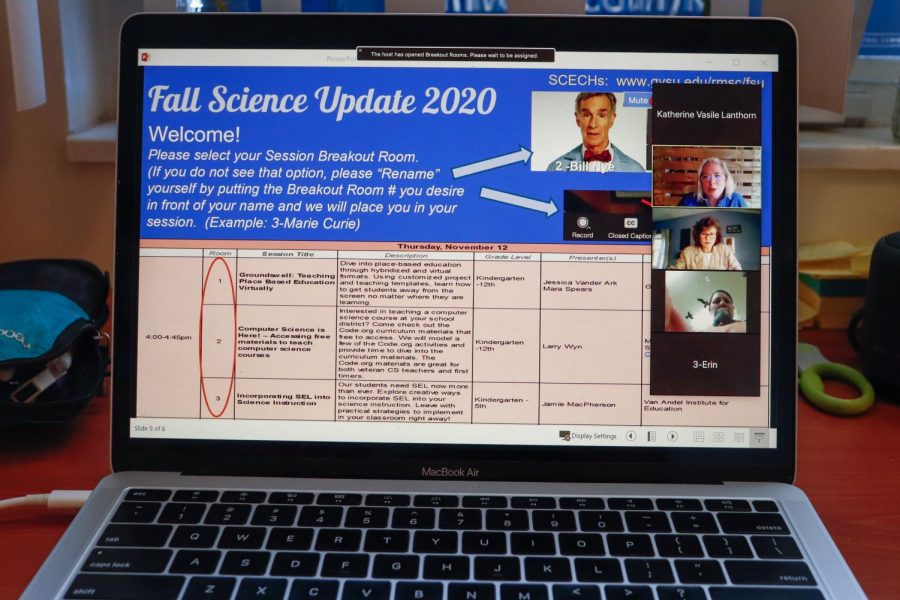GV’s Fall Science Update conference seeks to strengthen local education.
Nov 16, 2020
This week, the annual Fall Science Update Conference met online, hosting a series of lectures as a resource for local educators and teachers. Grand Valley State University’s Regional Math and Science Center has hosted the event for the past 34 years with the goal of strengthening the local scientific community of West Michigan’s educators. This year, there was a special emphasis on adapting classrooms to the new challenges raised by COVID-19.
The conference hosted experts from around West Michigan, hailing from organizations such as the Van Andel Institute for Education, the University of Michigan and the John Ball Zoo. Two of GVSU’s own professors gave presentations, with scientific themes such as geological time and the interconnected world of water.
Open to all educators from kindergarten teachers to college professors, the presentations of the Fall Science Update Conference may have had specific topics, but retained a common theme of seeking to help educators strengthen their ability to talk science with their students. Educators attended to learn about new ways to communicate and to teach the STEM fields, as well as learning new tactics to help their teaching during a pandemic.
“It’s an opportunity to share cool things with teachers, like innovative ways to teach and innovative ways to share the sciences with their students,” said Peter Wampler, GVSU geology professor and one of the presenters at this year’s Fall Science Update Conference.
His presentation is about GVSU’s ‘Making Waves’ Initiative, where he hopes to provide teachers with the resources they need to help them teach more effectively about the wide world of water.
“The focus is primarily on ‘in-service’ teachers,” said Steve Mattox, GVSU geology professor and another one of the presenters at this year’s Fall Science Update Conference. “These are teachers who have completed their degree or their certification, and now they’re continuing to educate and teach the students of the West Michigan Community. The whole point of this conference is to bolster these educators, to provide the tips and expertise that they can then turn around and use in the classroom. We want to ‘spice up’ their science classrooms, and get students more excited about STEM.”
Mattox’s presentation focused on relative geological time, the concept of ordering earth’s history, not in an absolute timescale, but instead basing it on sequencing the events as they happened. As with Wampler, Mattox said he hopes that the teachers who attended his presentation took away more than just some interesting facts about geological time, but also a stronger sense of how to talk geology with their students.
“I wanted to help show teachers that water connects us all,” Wampler said. “It’s a force to bring us together. ‘Making Waves’ may not have in-person events currently, but we’ve been able to shift our energies into our website. I hope that the teachers who attend my presentation will use that website, and find cool things they can put in their classrooms.”
The conference concluded Thursday, Nov. 12 having hosted 17 different presentations for West Michigan’s educators.
























